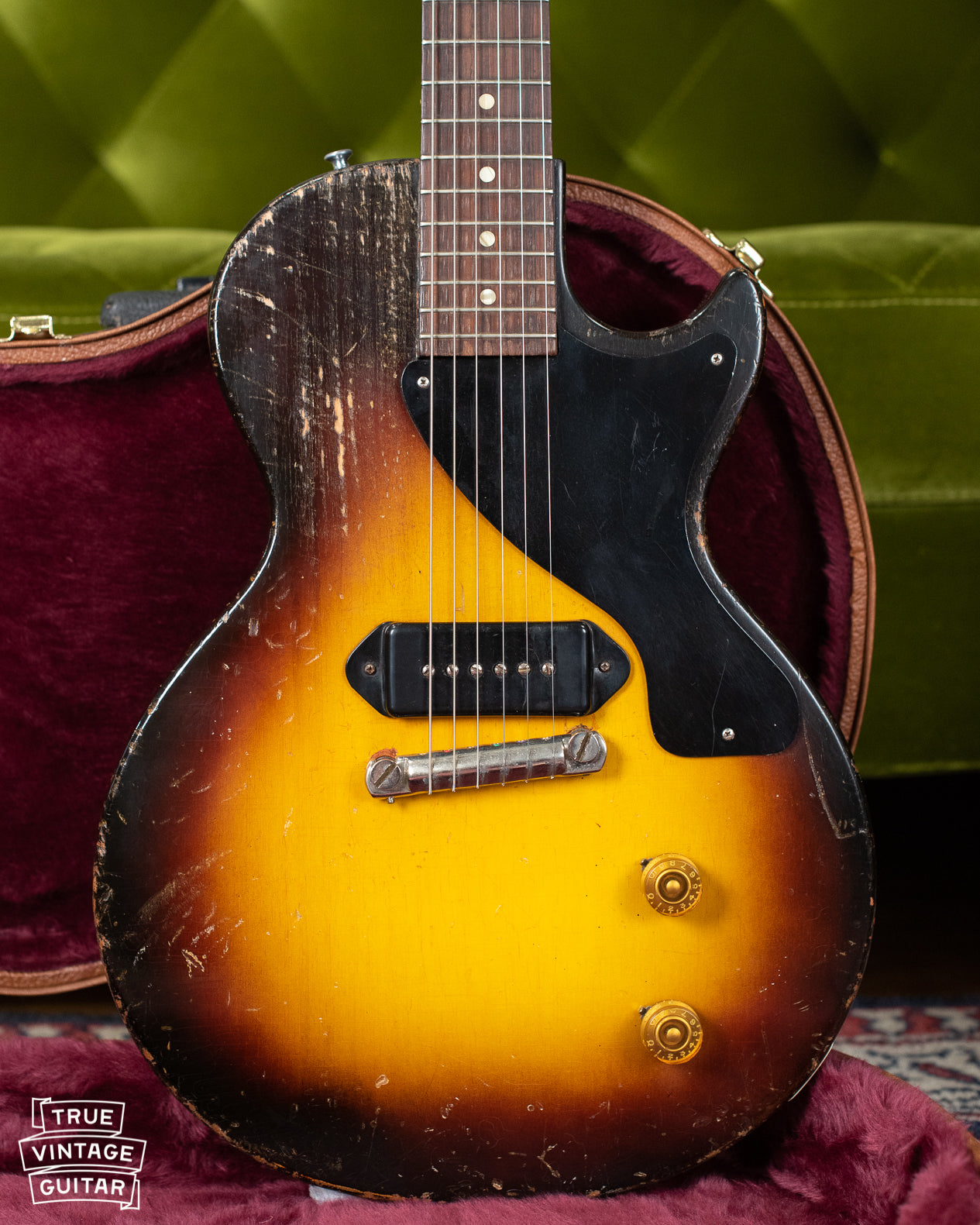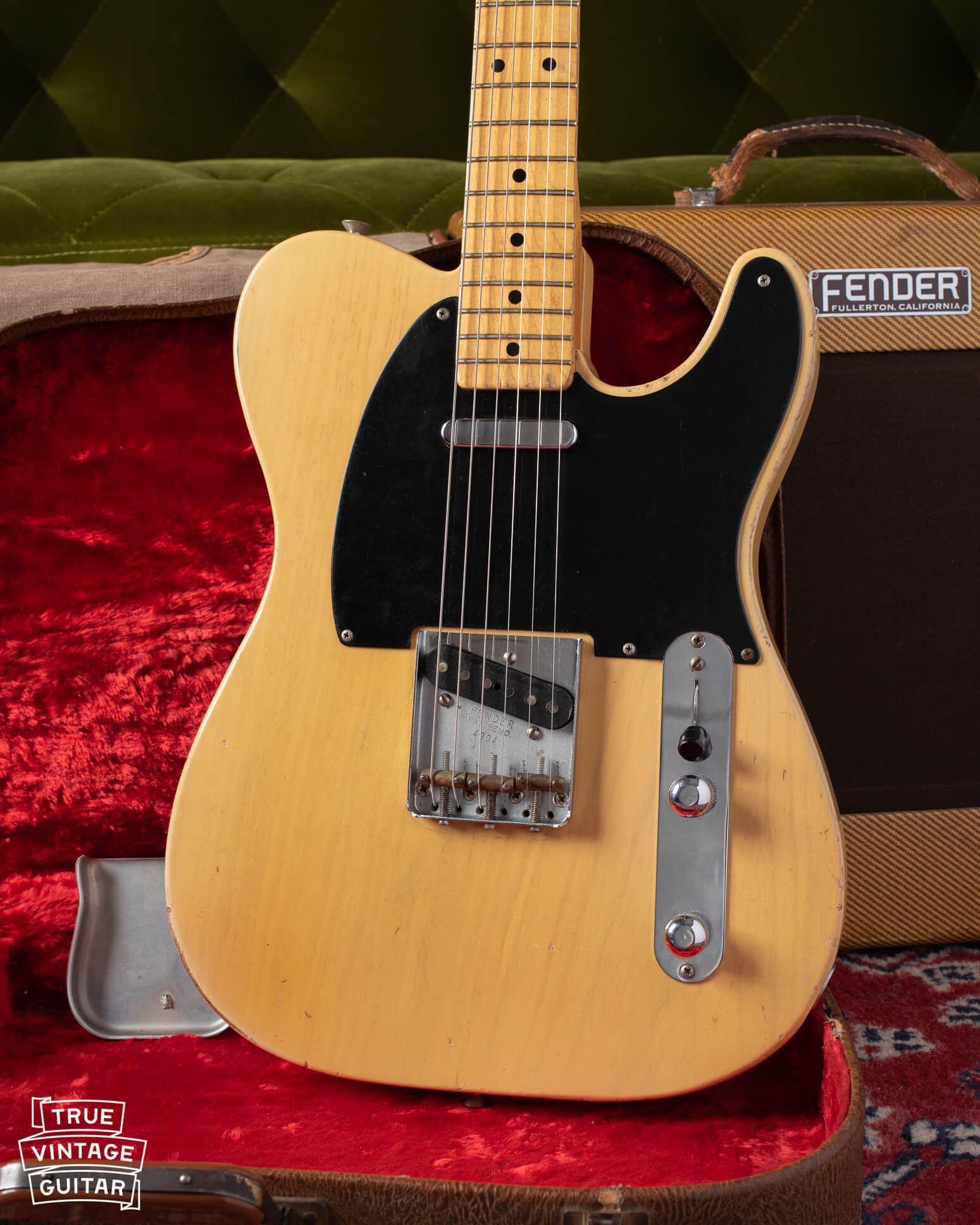I was in the hotel in room in London, England when I received a message from a couple in New York asking for help with how to date a Fender Stratocaster. As luck would have it, I was in London buying this Fender Stratocaster 1962 Fiesta Red, so all the Fender Stratocaster information was fresh in my mind. The couple sent pictures of an amazing 1964 Fender Stratocaster in Candy Apple Red finish that I was thrilled to check out. We discussed how to find the year, exactly which of the three available Red colors it was, and what it could be worth. I then rerouted my return flights to come through New York so I could check it out in person.
If you have a vintage Fender Stratocaster and are curious about what a Fender guitar collector might be willing to pay for it then you can contact me here: Sell a Fender. You can send pictures of your guitar for me to check out. I'd be happy to give my thoughts on how to date it, finish originality and color, and how much I'd be willing to outbid the next buyer for. You can check out another '64 Strat here: 1964 Stratocaster Sunburst.
Here's a great resource for Fender Stratocaster information if you'd like to spend the time to find out for yourself: The Fender Stratocaster by A. R. Duchossoir. It's a great reference book that helps detail how the model changed throughout the years. I highly recommend it.

Fiesta Red, Dakota Red, Or Candy Apple Red?
Fender offered three different red colors in the custom color chart from 1964. Fiesta Red is the lightest color which can have a pinkish-orange hue. Dakota Red is a bit deeper red that is a flat color with no shiny tiny metalic undercoat. Candy Apple Red Metallic is only very lightly metallic. It's a bit easier to see the silver or gold metallic undercoat in direct sunlight. A silver metallic undercoat was used from 1963 until Fender transitioned to a gold undercoat for Candy Apple Red in 1965.
Of the three red custom colors offered from Fender in 1964, Candy Apple Red is the most common and least desirable. We don't have production figures to determine how many of each red color were made, but if I had to guess, I would say that Fiesta Red is slightly more common than Dakota Red on the Stratocaster. A very similar, if not the exact same color was used on the Fender Mustang, so most collectors would still consider Fiesta Red to be a more rare color than Dakota on any vintage Fender guitar.
This Fender Stratocaster 1964 is finished in Candy Apple Red Metallic finish. In order to verify an original custom color finish, I look for the paint stick mark, sharp cavity edges, nail holes, and more. Fender began using a paint stick that was hammered flat and screwed to the neck pocket in 1963. It leaves a specific shadow mark in the neck pocket that's easy to identify. Here's what it looks like:

Stratocaster Inspection
Like most things vintage collectible, vintage guitars need an expert inspection to determine originality, year of manufacture, and value. I performed an inspection on this Strat while during the disassembly for cleaning and set up. Under the pickguard, I found that the switch was replaced at some point, some wiring was replaced, and the bridge pickup was rewound at some point.
I could tell that the potentiometers were original to the guitar because of the clean solder and proper date codes. Potentiometers are the variable resistors that allow a player to control the volume and tone of the output to the amplifier. They have codes on the back or side that indicates the manufacturer, year, and week of the year they were made. The potentiometer codes on this Stratocaster read "137 6422" where 137 = CTS, 64 = 1963, and 22 = the 22nd week.
Another important part of the inspection is the ink stamp on the heel of the neck. The code on this neck reads: "2JUL64B". The 2 prefix is the number that Fender used to indicate Stratocaster model before the CBS buyout. JUL indicates July, 64 indicates 1964, but B indicates the standard nut width for the model. Most non-student level Fender guitars feature this nut width measuring 1 5/8".




